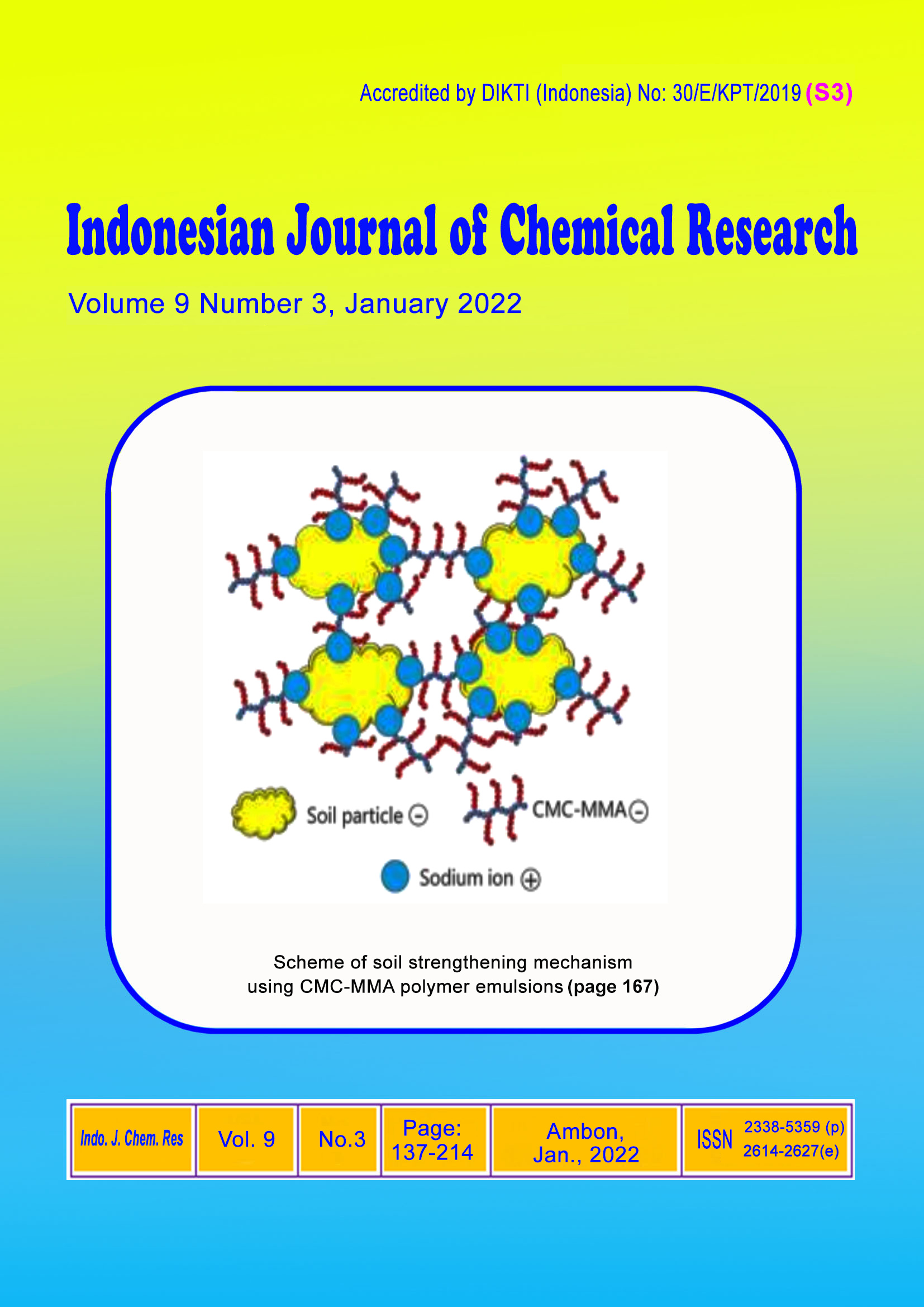Emulsion Polymers of Carboxymethyl Cellulose and Methyl Methacrylate with Sodium Dodecyl Sulfate Surfactant as Soil Stabilizer
Abstract
Polymer-based materials have gained considerable attention in the road construction sector due to their ability to improve the mechanical strength and durability of soil. In this study, carboxymethyl cellulose-methyl methacrylate (CMC-MMA) emulsion polymers were prepared from different MMA to CMC mass ratios with sodium dodecyl sulfate surfactant. The synthesized materials were homogeneously mixed with laterite soil, and their unconfined compressive strengths were measured using dry and wet methods on a universal testing machine. The results indicated that the polymers were obtained in high yields with optimum solids content. Characterization using Fourier transform infrared confirmed the homopolymerization probability of monomers in the materials with increased MMA fractions. In addition, the viscosity of the graft-copolymers measured at room temperature was in the range of 1.2-3.2 cP. The polymer-stabilized soils exhibited maximum unconfined compressive strengths of 564 and 162 psi, respectively, obtained from the dry and wet methods. In general, the rise of MMA fraction in the treated soils enhanced the compressive strength of the soil, with a slight increase in soil pH. This study unfolds the potential of cellulose-based materials that can be implemented in soil reinforcement technology.
Downloads
Copyright (c) 2022 Akhmad Zainal Abidin, R. B. Emil Trisatya Nuriman, Narendra Afian Pradipto, Ridwan P. Putra

This work is licensed under a Creative Commons Attribution-NonCommercial-NoDerivatives 4.0 International License.
Authors who publish with this journal agree to the following terms:
- Copyright on any article is retained by the author(s).
- The author grants the journal, the right of first publication with the work simultaneously licensed under a Creative Commons Attribution License that allows others to share the work with an acknowledgment of the work’s authorship and initial publication in this journal.
- Authors are able to enter into separate, additional contractual arrangements for the non-exclusive distribution of the journal’s published version of the work (e.g., post it to an institutional repository or publish it in a book), with an acknowledgment of its initial publication in this journal.
- Authors are permitted and encouraged to post their work online (e.g., in institutional repositories or on their website) prior to and during the submission process, as it can lead to productive exchanges, as well as earlier and greater citation of published work.
- The article and any associated published material is distributed under the Creative Commons Attribution-NonCommercial-NoDerivatives 4.0 International License.






_copy1.png)










